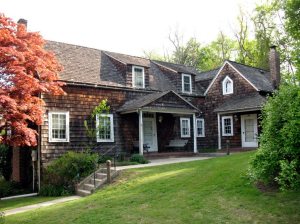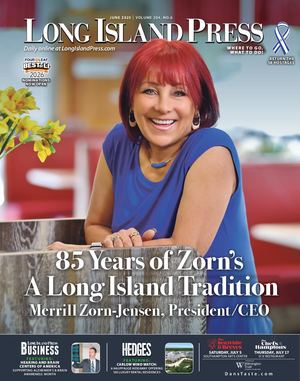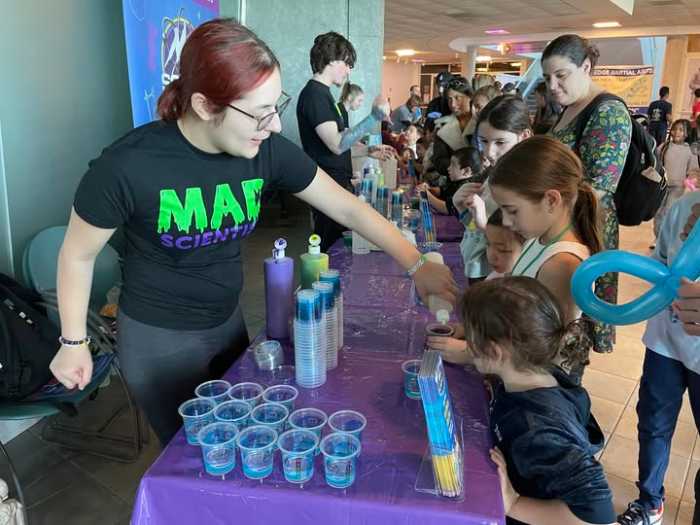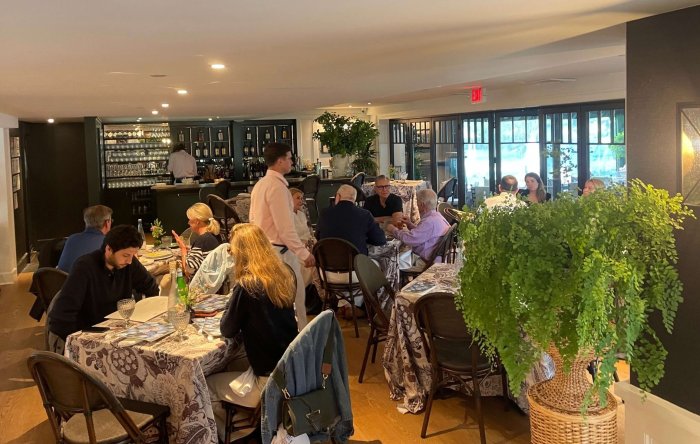The Cow Neck Peninsula Historical Society (CNPHS) is one special organization. Led by President Chris Bain and his talented board of trustees, this organization is preserving the history of our area in a way that makes history alive and interesting. Their column Then & Now is full of fun historical facts. On the CNPHS website (www.cowneck.org) there is the 360 Panoramic Tour of Port Washington, where the society presents dozens of panoramic views.

Last Saturday, the CNPHS held their Spring Fling at the Thomas Dodge Homestead. The history of the house, as most history of this area, is tied to the sea. Trustee, Treasurer and Past President Fred Blumlein was at the Spring Fling leading tours of the Homestead. The Dodge family traces its lineage as far back as 1306 when Peter Dodge was Lord Mayor of London. His fisherman descendant, Tristram Dodge Sr. (1607-83), came to America from England in 1647 with four sons, Israel, John, Tristram II and William. Tristram Sr. settled in Massachusetts, serving seven years there as an indentured servant.
In 1661, a small group of New England settlers bought the island of New Shoreham from the first group of English who had captured it from the Niantic Indians. Since Tristram Sr. was a fisherman, these settlers brought him along to teach them the fishing trade. In exchange, they gave him three acres of land on the island, for him and his heirs to use forever. The island is now called Block Island, after Dutch explorer Adrian Block, and is part of Rhode Island.
Early in the 18th century, the sons of Tristram Dodge II, Thomas and Tristram III, and their first cousins, Samuel and Jeremiah Dodge, came to Cow Neck from Block Island. By the late 18th century, the Dodge family properties went from the Mill Pond, off of Manhasset Bay, to Hempstead Harbor. It is estimated the family owned more than 700 acres of land in this area.
Thomas Dodge (1684-1755), an original Cow Neck homesteader/farmer, came here from Block Island in about 1709. He married Manhasset girl Susannah Hutchings in 1712. In 1718, he purchased 202 acres of land from Samuel Clowes, surveyor of Cow Neck. The land’s northern border was what is today Astor Lane and the eastern border was Hempstead Harbor. In 1719, Joshua Cornel (one of the first settlers of Cow Neck) sold 53 3/4 acres to Thomas. Today’s Lions Field was part of that purchase. Dodge built a log cabin there on the hill overlooking the bay and today’s Mill Pond in about 1721 and then constructed a small house north of the structure that exists there today (It is conjectured that the present house was built by Thomas’ son Joseph around 1763). The Matinecock Indians maintained a summer fishing village very near this site. In 1730, Dodge acquired 89 acres that is now the southwest section of Harbor Acres.
Today, the brown-shingled Thomas Dodge House is probably the oldest extant house in the Port Washington area. Seven generations of the Thomas Dodge family lived in this house. It has long been a favorite landmark and has changed little since its construction. In the early 1990s, the adjacent Water Pollution Control District purchased the house and its property to act as a buffer zone. The district is prevented by law from maintaining the house as a museum so they asked the CNPHS to maintain the house. The house has been open to the public since 1993. Since that time the CNPHS has been restoring the house and its grounds and developing the museum’s collections. It is open to the public by appointment.
The Thomas Dodge House is a Town of North Hempstead Historic Landmark and is listed on the State and National Register of Historic Places. It is also protected by the Town of North Hempstead’s Historic Landmark Preservation Commission.
The Cow Neck Historical Peninsula Society has walking tours throughout the summer. The mission of the CNPHS is to engage people of all ages in programs that highlight the lifestyles of the people that lived and worked on the peninsula. Central to this mission is the preservation of the Sands Willets House (circa 1735) and the Thomas Dodge Homestead (circa 1721), which the CNPHS operates as house-museums, serving as resources for the community.
Thanks to Bain and the trustees for keeping alive the history of our peninsula: Marla Freeman, first vice president, trustee and art director; Katherine Crean, second vice president and trustee; Fred Blumlein, treasurer and trustee; Ann Latner, recording secretary and trustee; and the following trustees: Ken Buettner, R. Lee Aitken, Robert Lager, William Gordon, Lucy Davidson, Ross Lumpkin, Linn Johnson, Betty Mintz, Fred Hehn, Mindy Mintz, and Joan DeMeo Lager, Curatorial Administrator.





























